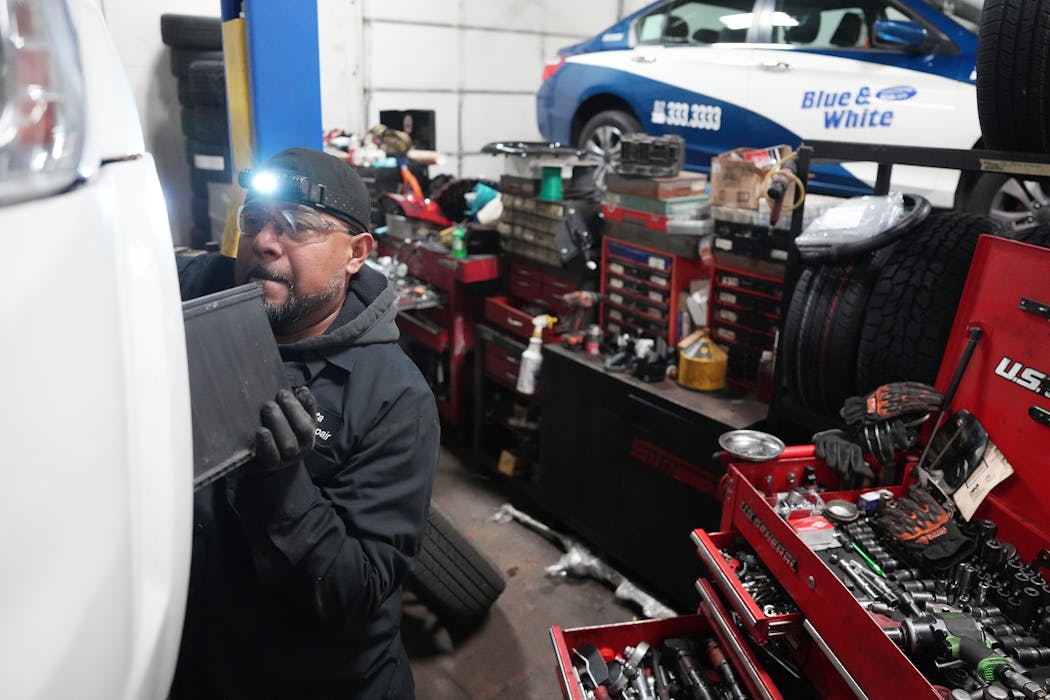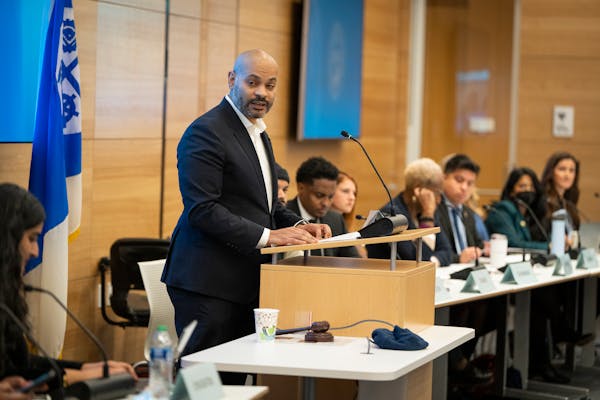Matthew Grathwol takes a Lyft to doctors appointments and business meetings. Jessica Felixberger uses the rideshare service to visit family, the library and church. Rachel Eggert relies on it to get to her job at U.S. Bank Stadium and to catch Timberwolves and Lynx games.
Rideshare companies have become the primary transportation option for thousands of Minnesotans who have disabilities or health conditions and don't drive. Many are watching anxiously as Lyft and Uber have threatened to leave town following the Minneapolis City Council's vote to boost drivers pay.
"I use Lyft and Uber like a lot of other people would use their personal car," said Corbb O'Connor, president of the National Federation for the Blind Minnesota. "We've become dependent on this service in a lot of ways."
Whether the companies will leave May 1 — as threatened — is yet to be seen, and Minneapolis leaders are debating potential changes to their ordinance that sets a minimum pay for drivers.
Lyft, the choice of many people with disabilities, has said it would leave only Minneapolis; Uber has threatened to stop serving the Twin Cities.
Gov. Tim Walz said the companies are playing "a game of chicken with folks in the disability community" who depend on them.
The DFL governor recently said City Council members should have waited to learn the results of a new state study on rideshare drivers' pay before their vote. The study, released days after the vote, suggests the rates set by the council are higher than needed to ensure drivers receive at least minimum wage.
Many Minnesotans with disabilities use Medicaid waivers to cover rideshare service costs. Nonprofit ConnectAbility of MN helps coordinate transportation, including Lyft rides, for people with waivers. The organization estimates that the companies' departures would affect thousands of people it serves, including 2,128 Minneapolis residents.
Sheri Wegner, executive director of ConnectAbility, predicted a cascade of negative consequences if the companies leave the city. Some people with disabilities would not be able to get to their jobs, leading to financial instability and increased insolation, she said.
"This is affecting the whole person," Wegner said.
Grathwol, of Minneapolis, uses a waiver to pay for his Lyft rides to get medication, shop for groceries and meet about his fledging business, Lake Mushroom Coffee. His family had written several letters to the City Council urging it to keep the rideshare company in the city.
In their letters, they said the service allowed Grathwol, who has been diagnosed with a schizoaffective bipolar disorder, to restore "his autonomy and independence."
"I am disabled, but I am doing really well," said Grathwol, who plans to attend Metropolitan State University. "The chance of getting off disability requires the movement of me throughout the city, and without that I am really stuck."
While people with disabilities would be hurt by the loss of the service, rideshare drivers with disabilities would benefit from the pay increase, said David Fenley, the Americans with Disabilities Act (ADA) director at the Minnesota Council on Disability.
He said Lyft and Uber do not have a strong track record of providing accessible services. Both companies have faced lawsuits related to ADA complaints.
Rideshare companies have rejected rides for people with service animals and lack vehicles that can accommodate wheelchairs, said Sam Jasmine, who serves on the Metropolitan Council's Transportation Accessibility Advisory Committee and is blind.
"If you are going to allow a system to come into the city and cut into regular cab business, shouldn't you demand that they provide rides for all people?" Jasmine said.
"If they want to leave, let them leave. And then work on the cab companies who are here and have sunk money into mobility accessible cabs and insist that they put in a plan that can give everyone secure rides."
Limited alternatives
Other transportation providers, including taxi companies, have said they are able to meet higher demand if the rideshare companies leave town.
"Serving people with disabilities, that's what our drivers do best," said Jeremy Kramer of Blue and White Taxi, one of the companies that frequently handle medical transportation.
He said Blue and White drivers have received training that many rideshare drivers have not.
However, several Minnesotans with disabilities said taxi companies are more expensive and less available. In the past decade, the number of licensed cab drivers in Minneapolis has plummeted as rideshare companies took over the market.
"You can't just decide that a cab is going to be the solution," Wegner said.
She said the cost of a cab from the suburbs to Minneapolis might be too much for some people with waivers.
Metro Mobility, the Met Council service that provides rides for people with disabilities and health conditions, could see an uptick in use if the rideshare companies leave Minneapolis, said Charles Carlson, the council's executive director of Metropolitan Transportation Services.
But he said there's "not necessarily a lot of overlap" between people who take rideshare services and Metro Mobility users.
Some people with disabilities said the Metro Mobility system doesn't function the way they want, largely because riders generally have to schedule a couple days in advance.
Jasmine, who lives in Plymouth, said her home is outside Metro Mobility's federally required service area. For a while, she said, the service refused almost all of her ride requests, but Jasmine said she pushed back and service has improved.
Felixberger of Inver Grove Heights frequently used Metro Mobility before the rideshare system became her daily choice. She said Metro Mobility drivers often ran late — sometimes 30 minutes to an hour — and what should have been a quick trip could drag on for two hours as the driver made stops for other passengers.
"It makes me feel more independent being able to use Lyft," she said, adding that transit access is limited in her area.
Felixberger uses a Dakota County program that partners with Lyft to provide rides to people with disabilities who have waivers. About 1,600 people in the county are eligible for Lyft rides, said Dakota County Transportation Coordinator Robyn Bernardy. The average person takes 26 rides a month, using Lyft to get to work, the grocery store, volunteer opportunities and even dates.
The program has allowed Dakota County residents to go to school in Minneapolis or work there, Bernardy said, and Lyft's departure "would be devastating."
Staff writer Erin Adler contributed to this report.



